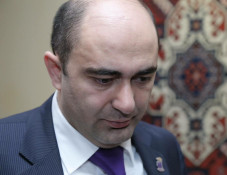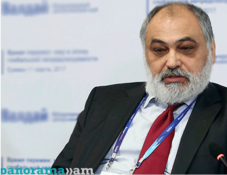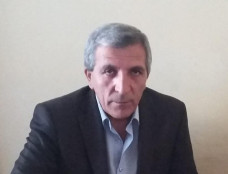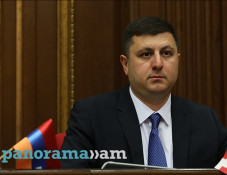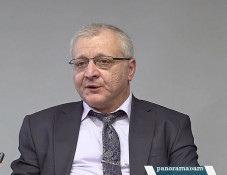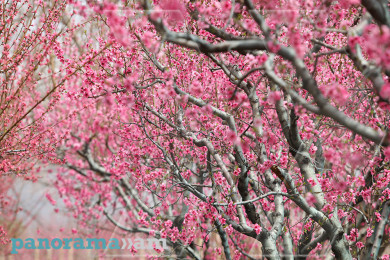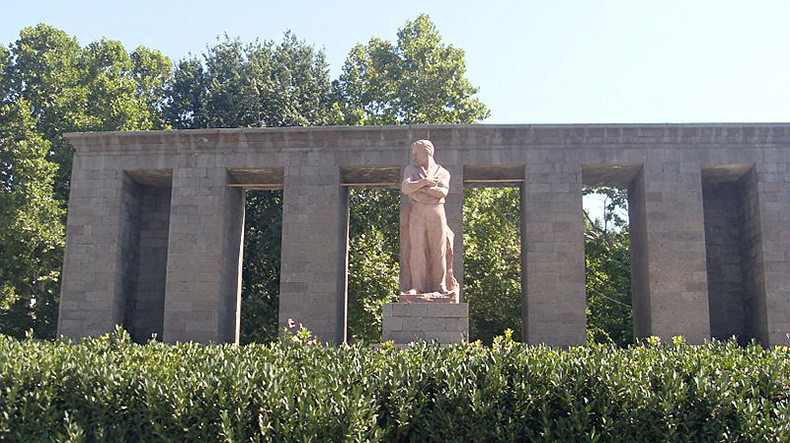
Stepan Shahumyan statue: Yerevan’s first monument carved by famous Soviet sculptor Merkurov
Armenia has no shortage of monuments, most of which were created in the Soviet period both by Armenian and Russian artists.
A statue to renowned Armenian politician Stepan Shahumyan is the first-ever monument officially erected in Yerevan in 1931. It is listed among the historical and cultural monuments of the Armenian capital.
The architect of the statue is Ivan Zholtovsky, while its sculptor is Sergey Merkurov, a prominent Soviet sculptor-monumentalist of Armenian-Greek descent.
The 3.5-meter tall statue located in front of a grey basalt wall of seven pylons is carved in reddish granite. It stands in the place of a Russian church demolished at the end of 1920s, together with a number of other churches in old Yerevan.
Sergey Merkurov was born in 1881 in Alexandrapol (modern Gyumri, Armenia’s second largest city). He left the Kiev Polytechnic Institute after a political scandal and moved to Switzerland, where he became a student of the Swiss sculptor Adolf Meyer. He attended art college in Germany from 1902 to 1905, later entering the Auguste Rodin studio in Paris.
Merkurov had met Vladimir Lenin when the revolutionary leader was living abroad, and listened to his speeches. Among many others, the statue of Lenin that stood in Lenin Square, Yerevan during Soviet times also was the work of Merkurov.
Merkurov returned to the Russian Empire in 1907 as he was called by the Armenian Apostolic Church authorities to execute a post-mortem mask of Catholicos Mkrtich Khrimian. It was his first work of this kind. Then he lived in Tbilisi, Yalta, Moscow, and made post-mortem (death) masks of Leo Tolstoy, Hovhannes Tumanyan, Vladimir Lenin and his wife, Maxim Gorky, Vladimir Mayakovsky and other famous figures. The technique itself is not an easy process. The author pours plaster on the body's face and puts a thread in the middle of it. Then, another material like bronze or plaster is poured inside the mask and this is how an actual-size face of the deceased results.
He was an outstanding representative of academic modern style, employing the themes of death and stone blocks. As a philosopher of the arts, Merkurov also used motifs of thought (Monument of Dostoevsky, 1911–1913; The figure-portrait of Thought, 1918).
Merkurov was known as a free-thinker and an extraordinary person. He was a member of the "United Workers' Brotherhood", the Association of Painters of Revolutionary Russia and the Communist Party of the Soviet Union.
The great sculptor died in 1952 in Moscow.
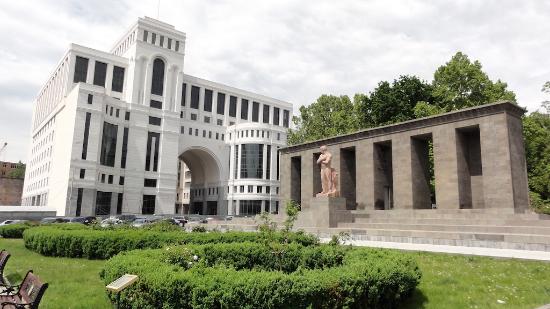
.jpg)
Related news
Newsfeed
Videos





.JPG)



